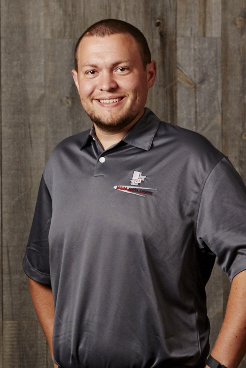ILSOYADVISOR POST
Pandemic-Induced Supply Chain Issues Still Prevalent
The past 14 months have been extremely tough on all of us. What started as “Two Weeks to Flatten the Curve,” stretched into over a year of unprecedented government lockdowns and restrictions. Thankfully, we have watched the marvels of modern science develop, implement, and roll out a vaccine faster than ever before. Here in mid-May, we are seeing much of the United States open back up or at least being scheduled to open with restrictions lifted. As full of uncertainty as 2020 was, we were fortunate enough to begin the season with fully stocked pipelines of products. In many ways, agriculture is a very socially distanced occupation. Being an “essential” industry, 2020 went almost normally as far as production agriculture goes. However, the coat tails of the lockdowns were just beginning.
While day-to-day operations have been going normally over the past year here in rural American agriculture, other industries have been shuttered. Factories, mills, ports, transportation, and production plants have all been severely affected by restrictions. I have heard there is an 18-month lead time required to buy a new tractor and vehicles are even worse. Where this really hits a point of emergency in production agriculture is herbicides.
Much of the raw active ingredients in Liberty, generic liberty, and generic glyphosate is manufactured overseas. Many of those factories have not been running at full capacity over the past year. From there, the raw ingredients are hitting bottlenecks when shipping into the U.S. Once approved for import, the ports are having bottlenecks in trucking. I have heard that for every truck on the road hauling these raw ingredients, there are enough loads to justify 16 more trucks.... but trucks and truckers are in extremely tight supply. Once raw ingredients make it to production facilities, they have the same issues of plants not running at full capacity and struggling to get to their destination. I have also heard if glyphosate or glufosinate was not on order months ago, there is no chance you will get it. Even if it was ordered months ago, there is no guarantee when it will arrive.
Other than organic acres, almost every acre of soybeans grown in the U.S. receives at least a single application of glyphosate or glufosinate and usually receives multiple applications. The approval of Xtend Flex soybeans adding Liberty tolerance to soybeans that were previously tolerant to Round Up and Dicamba will add strain to the already extremely tight Liberty pipeline. Now more than ever, it is imperative that we all rely as heavily on other chemistries as we possibly can. We need pre-emerge residuals to push off post applications and over the top residuals to make sure we do not need a second over the top application. We all need to make sure to incorporate dicamba, clethodim, metribuzin, metolachlor, 2,4-D, and every other knock down and residual herbicide we can.
Luckily, overlapping residual applications on soybeans is a win/win combination for the grower as well as the supply chain as a whole. According to Iowa State University, if weeds reach 5” in height, your soybeans will lose 5 percent of yield. In a 60-bushel yield environment at $14 per bushel, that is a $42 per acre economic loss. Many of these residual herbicides can be added to your program for $10 – $15 per acre. Make sure you stay in good communication with your local CCA on implementing a good herbicide plan to keep weed-free fields, use less of tight supply herbicides, and gross more per acre this year.





Comments
Add new comment